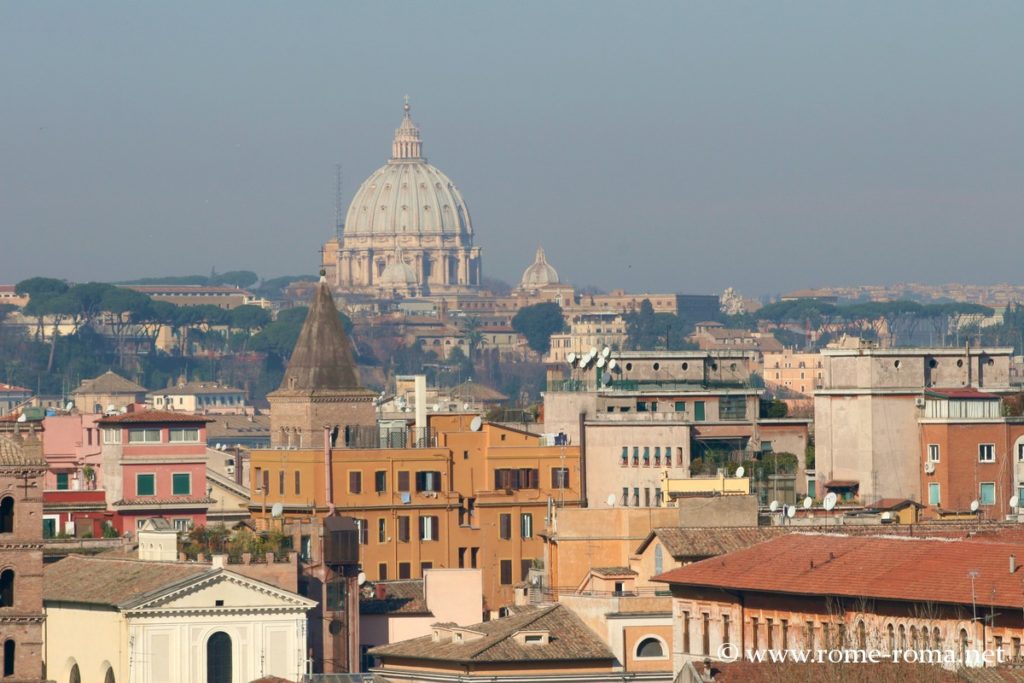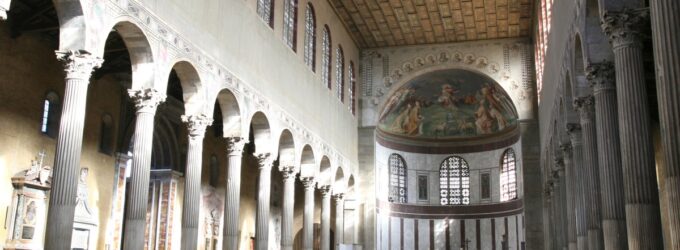Separated from the Palatine Hill by the Circus Maximus, the Aventine Hill is a bourgeois residential neighborhood and one of the most peaceful areas in central Rome. Its northwestern slope rises steeply above the banks of the Tiber River.
The Heart of the Aventine
The historic center of the Aventine is the Piazza dei Cavalieri di Malta, which acquired its current appearance from architect Giovanni Battista Piranesi around 1765. At number 3 on this square, a famous view is revealed through the keyhole of the priory gate of the Knights of Malta. One can glimpse the dome of St. Peter’s Basilica at the end of a rose-lined avenue. You can easily find the spot by following the usual daytime queue.
Adjacent to it is the Church of Saints Boniface and Alexis.
Via di Santa Sabina leads to Piazza Pietro d’Illiria. From here, one can discover the fascinating Basilica of Saint Sabina and enter the Savello Park, better known as the Orange Garden (Giardino degli Aranci in Italian). One can admire a beautiful panorama of the city, with a splendid perspective of St. Peter’s dome.
On the Edge of the Hill
Descending the eastern slope of the hill, one enjoys a view encompassing the Circus Maximus and the Palatine Hill, particularly impressive at sunset when these ruins are illuminated.
The Municipal Rose Garden occupies the base of this slope.
The imposing walls emerging from the Palatine Hill are the remnants of the Domus Augustana, the former grand palace of Emperor Domitian and his successors.
The hill located to the east of the Aventine is called the “Little Aventine,” with at its heart the charming Basilica of San Saba.





